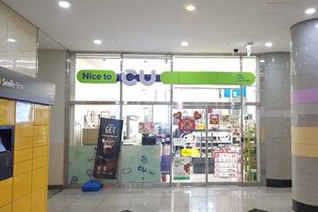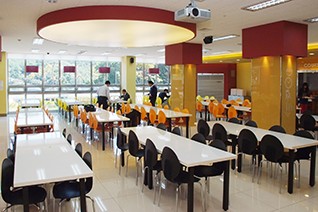Due to the ongoing prevalence of COVID-19, Dankook University is currently conducting mostly online classes, and a considerable number of students are confined to their homes for studies, including those living in our campus dormitories. This may be comfortable for those living at home, but for those living in dorms, the restrictions are leading to many inconveniences. There are very few easily accessible outside restaurants, so students are being forced to rely on costly delivery food.
Students living in dormitories nowadays are experiencing a lot of inconvenience due to the closing of the school cafeteria. In 2019, the average price of a meal in the student restaurant was 4,000 won, and various meals were on offer throughout the day. With this option being closed to on campus residents, some have looked to cooking their own food in their dorms. However, the options are limited since there are no other tools to cook with other than microwave ovens. This forces students to rely on convenience stores and food delivery services to appease their hunger, creating a financial burden for them. Delivery fees range from 2,000 won to 5,000 won per order, which is a lot of money for students. An average meal plus delivery can cost more than 15,000 won. To save costs, students gather their orders together to split the delivery fees. With delivery minimums in place, students are also forced to share with others or order more than one serving at a time. In a society stressing social distancing while living in the dormitory, sharing is a risk for students. The bottoms line is that overall, the cost ordering food is more than triple the price of school cafeteria meals.
Convenience stores also offer meal solutions for students. However, there are complaints that the supply is not enough to meet demand. Most students living in dormitories rely on convenience stores for their breakfast, lunch, and dinner. The shops fill their shelves with lunch boxes, kimbap, and cup noodles every morning, but by the evening the food is gone. Students then have no choice but to rely on the higher priced delivery food.
 |
| ▲ The convenience store located in the student dormitory in Jukjeon campus (Photo from the dorm website) |
There is not only a lack of food, but students are also experiencing a shortage of household goods. Students who need to buy toilet paper or detergent usually use convenience stores, but they are finding the products out of stock regularly.
Another complaint by residents in dormitories is the lack of available microwaves. Most food sold in convenience stores are cooked in a microwave oven, so students need them to enjoy a simple meal. However, the number of microwaves available falls short of the number required by dormitory students. This means students living in dormitories must wait in line for quite a long time for their chance to cook their food.
The Dankook Herald (DKH) interviewed the dormitory administration team to better understand the problems and realistic limits they face. They said COVID-19 forced the closure of the student cafeteria. Since then, the school has tried to secure a replacement, but no company wants to accept the risk of operating in this environment. The dormitory administration representative said, “We even tried food trucks last winter, but only a few students used them, so they had to be withdrawn.” They are now in discussion about operating a dormitory snack counter. They also began permitting food ingestion inside the rooms and are looking into the purchase of additional microwaves. With regards to the need for additional packed lunches, the representative said “We already tried to discuss the additional supply of convenience store packed lunches, but given their short shelf life it is hard to estimate supply and demand surrounding online lessons.” The representative also explained, to operate a dormitory cafeteria, you need a minimum number of personnel. Due to a shortfall in the minimum number of meal personnel and other implementation problems, they decided not to operate a cafeteria. However, if they were to re-open, they would consider limiting the operating hours to weekday lunches and evenings. He said, “It is one thing for students to want to have access to a restaurant, but they also need to use it. If they don’t, then it will be forced to close yet again.”
 |
| ▲ The restaurant located in the student dormitory in Jukjeon campus (Photo from the dorm website) |
Many students currently live in the campus dormitories and are directly impacted by the meal access problems. The school needs to make efforts to deal with these problems and resolve them as soon as possible. The university authorities have to think of the responsibility they carry for the welfare of students and find solutions that will benefit the campus as a whole.
정소연, 구시현, 박지안, 오유준 dankookherald@gmail.com

![[Campus Magnifier] Let's Surf the Library!](/news/photo/202404/12496_1765_4143.jpg) [Campus Magnifier] Let's Surf the Library!
[Campus Magnifier] Let's Surf the Library!
![[Campus Magnifier] Let's Surf the Library!](/news/thumbnail/202404/12496_1765_4143_v150.jpg)





